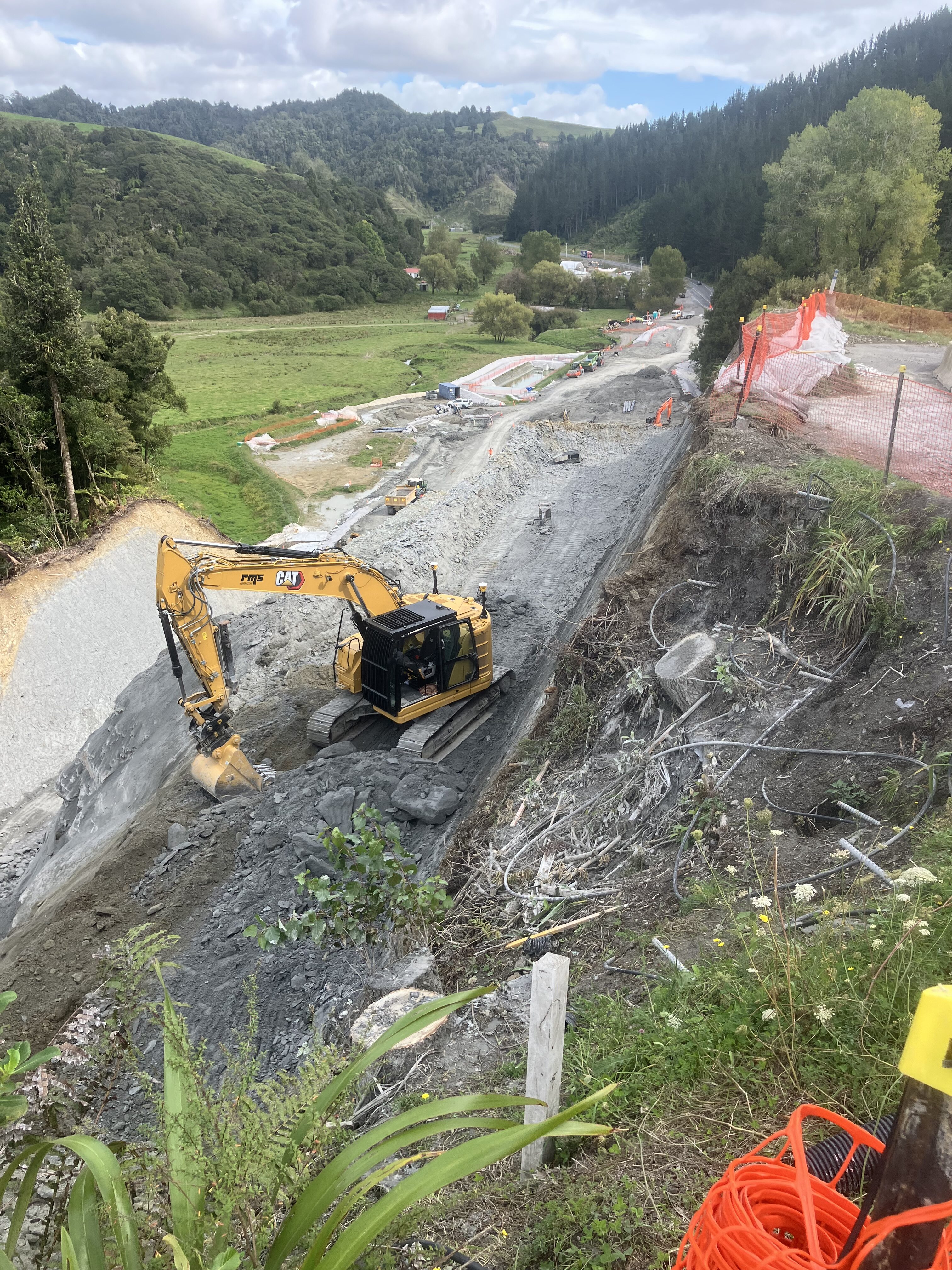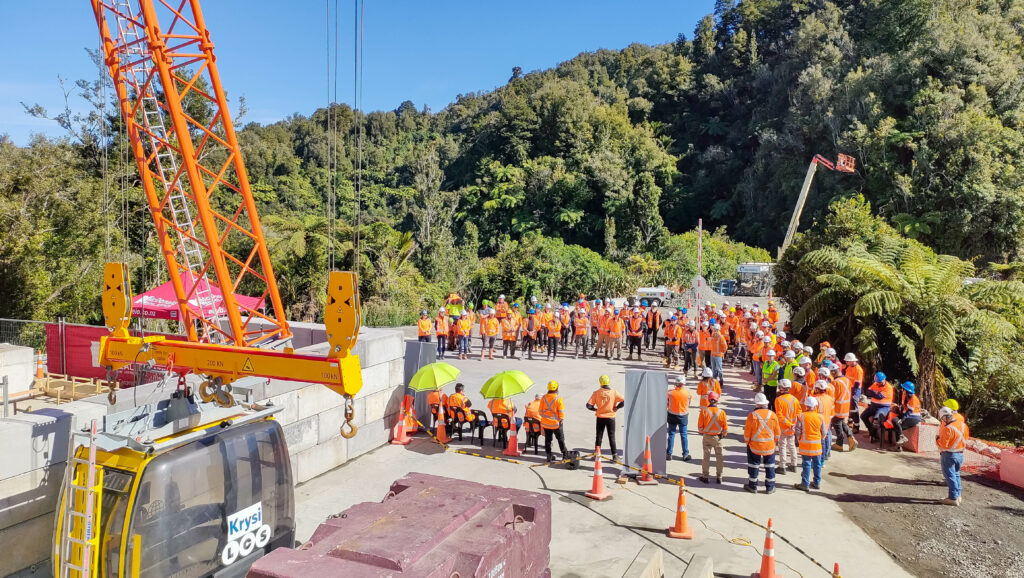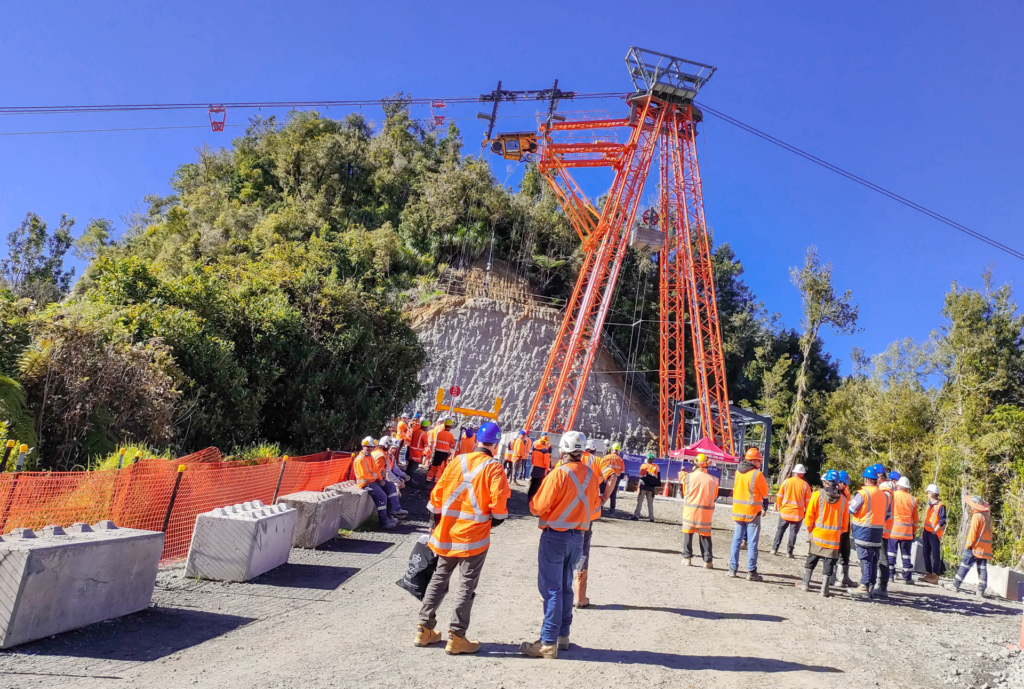Te Ara o Te Ata: Mt Messenger Bypass
Protecting the environment while creating a more resilient and safer connection.
State Highway 3 from Uruti to Ahititi, near New Plymouth, is steep, narrow and dangerously windy. The Te Ara o Te Ata: Mt Messenger Bypass has been designed to bypass one of the most challenging lengths of this highway.
Our work as a part of this alliance is no easy task: removing 1 million cubic metres of earth, including numerous large rock cuts and shaping of embankments, constructing a 235-metre tunnel, building two bridges, and doing it all in a highly remote, mountainous area covered in native bush. Te Ara o Te Ata isn’t just a highway, but an enormously challenging environmental project requiring careful ecological sensitivity that just so happens to have a road running through it.
In response to the tricky terrain, the innovative use of a New Zealand first has been developed: a 600-metre cableway. This will provide access into the remote gullies for both people and equipment, allowing materials to be delivered to the workface from the existing state highway.
Our work
Installing the 600-metre Mount Messenger Cableway, anchored 20 metres into the hillside.
Removal of 1 million cubic metres of earth, including numerous large rock cuts.
Construction of two bridges, 125 metres and 30 metres long.
Construction of the 235-metre tunnel with a road header.
Related drainage works, including 18 cross culverts.
Working alongside ecology teams to protect native wildlife, including rare kiwis, bats and reptiles, and replace vegetation cleared during construction.
Sustainable Outcomes
This is a place of cultural, historic and environmental significance. As such, we have been working closely with iwi Ngāti Tama to ensure we maintain respect for the whenua (land) and its incredible biodiversity during construction of the bypass. Matauranga Māori (Māori knowledge) was incorporated into the project’s early design, and kaitiaki (cultural guardians) are working with us on-site to guide us in day-to-day operations.
Additionally, with so many protected species living in the project area, care for our environment has been essential. We have been deploying ecological teams, trained kiwi dogs and other environmental specialists daily to find, identify and rehome any native species which might be impacted by our work. This is in addition to extensive pest control work to further protect the site and its inhabitants.
Client
Waka Kotahi NZTA
Location
Taranaki
Completion
Current



